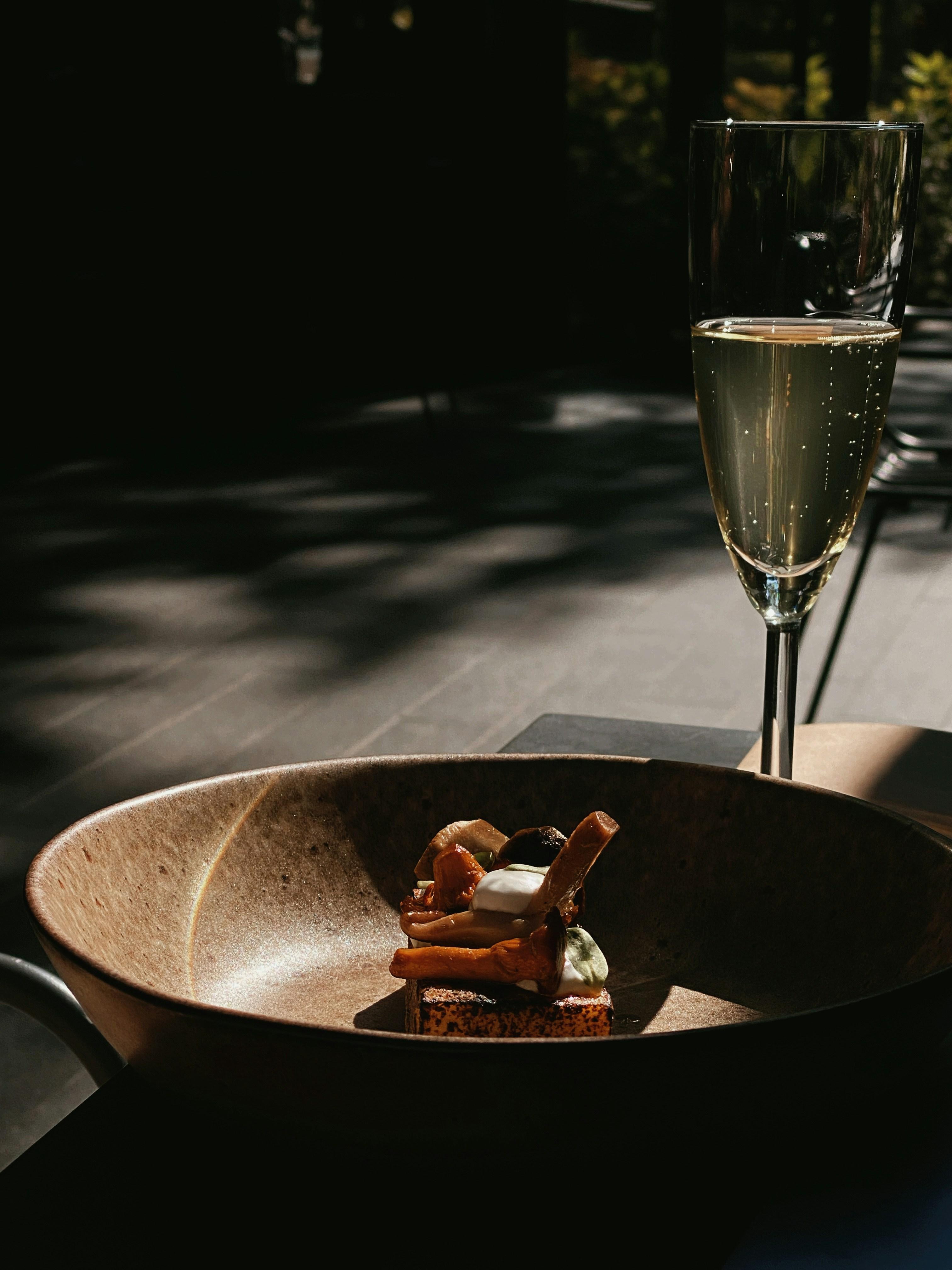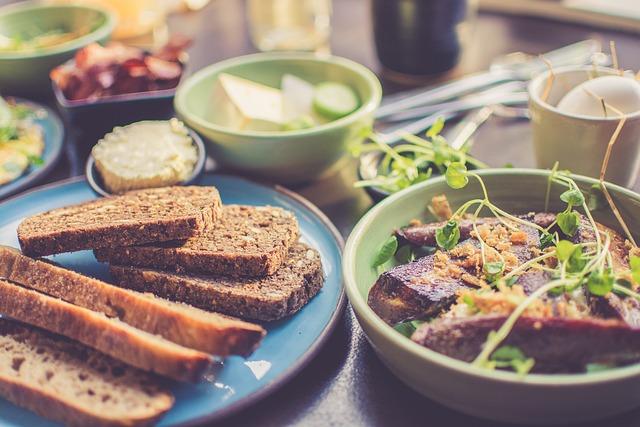In the culinary world, the adage “we eat with our eyes first” holds a truth that transcends cultures and cuisines. The art of meal presentation is not merely about arranging food on a plate; it is an expression of creativity, an invitation to savor the experience even before the first bite. When it comes to healthy meals, this art takes on an added dimension. The challenge is to balance visual appeal with nutritional integrity, creating dishes that are as pleasing to the eye as they are nourishing to the body. In this exploration of “,” we delve into the techniques and philosophies that transform wholesome ingredients into vibrant, edible masterpieces. Whether you’re a home cook or a seasoned chef, this journey promises to inspire a fresh perspective on how we present and perceive our meals, turning every dish into a feast for both the eyes and the palate.
Elevating Aesthetics Understanding the Visual Impact of Colors and Shapes
Colors and shapes play a pivotal role in transforming an ordinary meal into a culinary masterpiece. The artful use of vibrant hues and geometric forms can evoke emotions and enhance the dining experience. Consider the bold, contrasting colors of fresh vegetables like crimson tomatoes, verdant spinach, and golden bell peppers. These colors not only attract the eye but also signal freshness and nutritional richness. Pair these with the elegant curves of a well-sliced avocado or the playful spiral of a lemon zest, and you create a visual narrative that is as engaging as it is appetizing.
- Color Harmony: Use complementary colors to create a balanced and appealing dish.
- Shape Variety: Incorporate different shapes to add texture and interest to your plate.
- Plate Canvas: Think of your plate as a canvas; arrange elements thoughtfully to enhance visual flow.
Beyond mere aesthetics, the thoughtful arrangement of colors and shapes can subtly guide the diner’s perception of taste and quality. A meticulously arranged salad or a symmetrically plated dessert can elevate the perceived sophistication of the meal, inviting diners to savor each bite with heightened anticipation. By mastering the visual impact of colors and shapes, you not only create a feast for the eyes but also set the stage for a memorable culinary journey.

Plating with Purpose Techniques for Arranging Ingredients Artfully
Creating a visually appealing plate not only enhances the dining experience but also promotes healthier eating habits by making nutritious ingredients more enticing. To achieve this, consider using color contrasts to your advantage. For instance, pair vibrant greens with rich reds or deep purples to create a lively and appetizing presentation. This not only catches the eye but also ensures a diverse range of nutrients. Additionally, use the rule of thirds in plating, where you divide the plate into three sections, balancing proteins, carbohydrates, and vegetables. This technique not only aids in portion control but also creates a harmonious visual balance.
- Layering: Start with a base of grains or greens, followed by proteins, and top with colorful vegetables or fruits for added texture.
- Height: Add dimension by stacking ingredients or using garnishes like microgreens or nuts to draw the eye upward.
- Negative Space: Embrace empty space on the plate to highlight the main ingredients, ensuring the dish doesn’t feel overcrowded.
Utilize different textures to engage more senses and create a delightful eating experience. Combining crispy, smooth, and creamy elements can make a dish not only look appealing but also offer a more satisfying bite. Remember, the goal is to create a plate that is as nourishing as it is beautiful, inviting diners to savor each thoughtfully arranged element.

The Role of Texture How Contrasts Enhance Culinary Appeal
In the symphony of flavors that make up a dish, texture plays a pivotal role, often serving as the unsung hero that transforms a meal from ordinary to extraordinary. The interplay of different textures can elevate a dish, providing a sensory experience that engages not just the palate but the mind. Contrast is key in creating this dynamic experience. Imagine the satisfying crunch of a fresh vegetable against the creamy backdrop of a perfectly mashed avocado. This juxtaposition not only delights the senses but also enhances the overall perception of freshness and quality.
- Crispiness: Incorporate elements like toasted seeds, nuts, or lightly sautéed greens to add a satisfying crunch.
- Creaminess: Use ingredients like yogurt, avocado, or pureed legumes to introduce a smooth, rich texture.
- Tenderness: Achieve this with perfectly cooked proteins or slow-roasted vegetables that melt in the mouth.
- Juiciness: Fresh fruits or lightly dressed salads can provide a burst of juiciness that refreshes the palate.
By thoughtfully combining these elements, you create not just a meal, but an experience—a dance of textures that captivates and sustains interest from the first bite to the last. In healthy meal presentation, these contrasts not only enhance visual appeal but also promote a balanced and satisfying dining experience.
Garnishing with Grace Selecting the Perfect Finishing Touches
When it comes to elevating your healthy meals, the art of garnishing is akin to placing the final brushstroke on a masterpiece. It’s not merely about decoration; it’s about enhancing the overall experience of the dish. Select garnishes that not only add visual appeal but also complement the flavors and textures of your meal. A sprinkle of freshly chopped herbs, such as parsley or cilantro, can bring a burst of color and freshness. Meanwhile, a few slices of vibrant radish or bell pepper can introduce a satisfying crunch.
- Color Coordination: Choose garnishes that contrast with the primary colors of your dish to create visual interest.
- Texture Play: Incorporate elements that add crunch, creaminess, or juiciness to balance the textures of the main components.
- Flavor Harmony: Opt for garnishes that echo or enhance the flavors of your dish, such as citrus zest for a tangy finish.
- Minimalism: Sometimes, less is more. A single, well-placed edible flower can be more striking than an overabundance of toppings.
By thoughtfully choosing your finishing touches, you not only enhance the aesthetic of your meal but also create a harmonious balance that engages all the senses. Whether you’re preparing a simple salad or an elaborate entrée, the right garnish can transform your dish into a work of art.
Wrapping Up
As we conclude our exploration of the art of healthy meal presentation, it becomes evident that the journey from kitchen to table is more than just a culinary task—it’s a celebration of creativity, balance, and mindfulness. By harmonizing colors, textures, and shapes, we not only nourish the body but also delight the senses, transforming every meal into an experience that resonates with beauty and intention.
In mastering this art, we embrace the idea that presentation is a bridge between health and enjoyment, where each dish tells a story of care and thoughtfulness. Whether you are a seasoned chef or a home cook, remember that the canvas of your plate is an opportunity to express your passion and commitment to well-being.
So, as you embark on your next culinary adventure, let the principles of aesthetic harmony guide your hand. Elevate your meals beyond sustenance, and savor the joy of creating something truly special—where health meets art in every bite.
